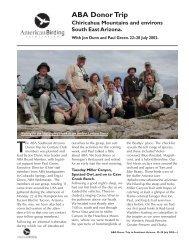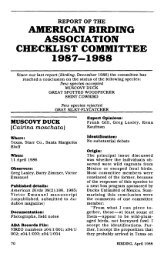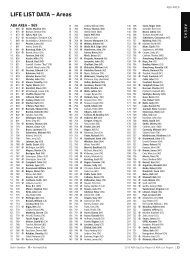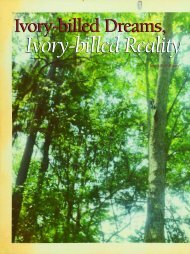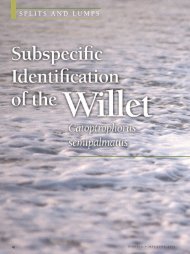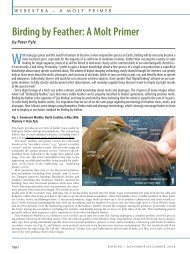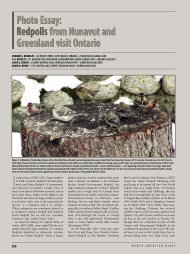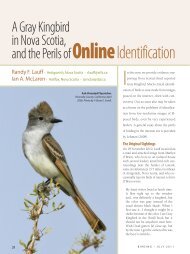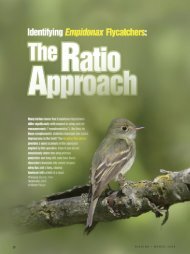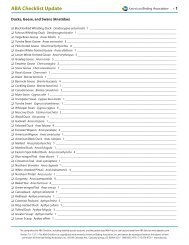230 Chestnut Street Pacific Grove, California 93950 heraldpetrel ...
230 Chestnut Street Pacific Grove, California 93950 heraldpetrel ...
230 Chestnut Street Pacific Grove, California 93950 heraldpetrel ...
- No tags were found...
Create successful ePaper yourself
Turn your PDF publications into a flip-book with our unique Google optimized e-Paper software.
ood feather condition is an essential component of the lives of birds.All birds undergo the process of molt, replacing worn feathers withnew ones, and this process is typically completed annually. Birds normallymolt only when sufficient resources are available and when it fits intotheir life cycles. The process of active flight feather molt is often insertedinto the lives of birds when other energetic demands are at a low point, butfor large species like raptors, molt takes place over an extended period andoften overlaps with breeding. This overlap can be on the order of fourmonths—shorter in smaller species, longer in larger species. This molt typicallyoccurs between April and September, in order to provide ample timeto replace flight feathers prior to migration. In contrast, most passerines requireless time to molt, undergoing a complete prebasic molt after thebreeding season and just before fall migration.Molt and migration can be physiologically expensive processes for birds, and conventionalwisdom suggests that the two processes typically do not occur simultaneously (Payne 1972,Clark 2001, Elphick et al. 2001). However, whether the separation of these two processes isdriven by physiological demands or aerodynamic limitations, or by some combination of thetwo, remains unclear and may depend on the species. Flight feather molt results in gaps in thewing surface, which could compromise successful migration. Exceptions are known for certaintaxa, including Herring Gull (Steve N. G. Howell, personal communication), Black Tern(Zenatello et al. 2002), and several swallow species (Howell, personal communication),which undergo slow replacement of flight feathers during migration. Both the Red-eyed Vireoand Rose-breasted Grosbeak are exceptional among temperate breeding long-distance migrantpasserines in that they molt flight feathers during fall migration (Tordoff and Mengel 1956,Cannell et al. 1983). Despite previous mention of this phenomenon in the family Accipitridae(Liguori 2000, 2002, 2005, 2009), it is not widely discussed in the molt literature. Pyle (2008)gives raptor molt its most thorough treatment to date, mentioning active wing molt duringmigration for accipiters and for Broad-winged Hawk.Here we provide accounts of 11 raptor species that actively molt flight feathers during migration,and we give synopses of the molt patterns for each species. These accounts are basedon our review of thousands of images from 15 hawk migration sites across North Americawhere we have studied and photographed raptors.w w w . a B a . o r g 35



